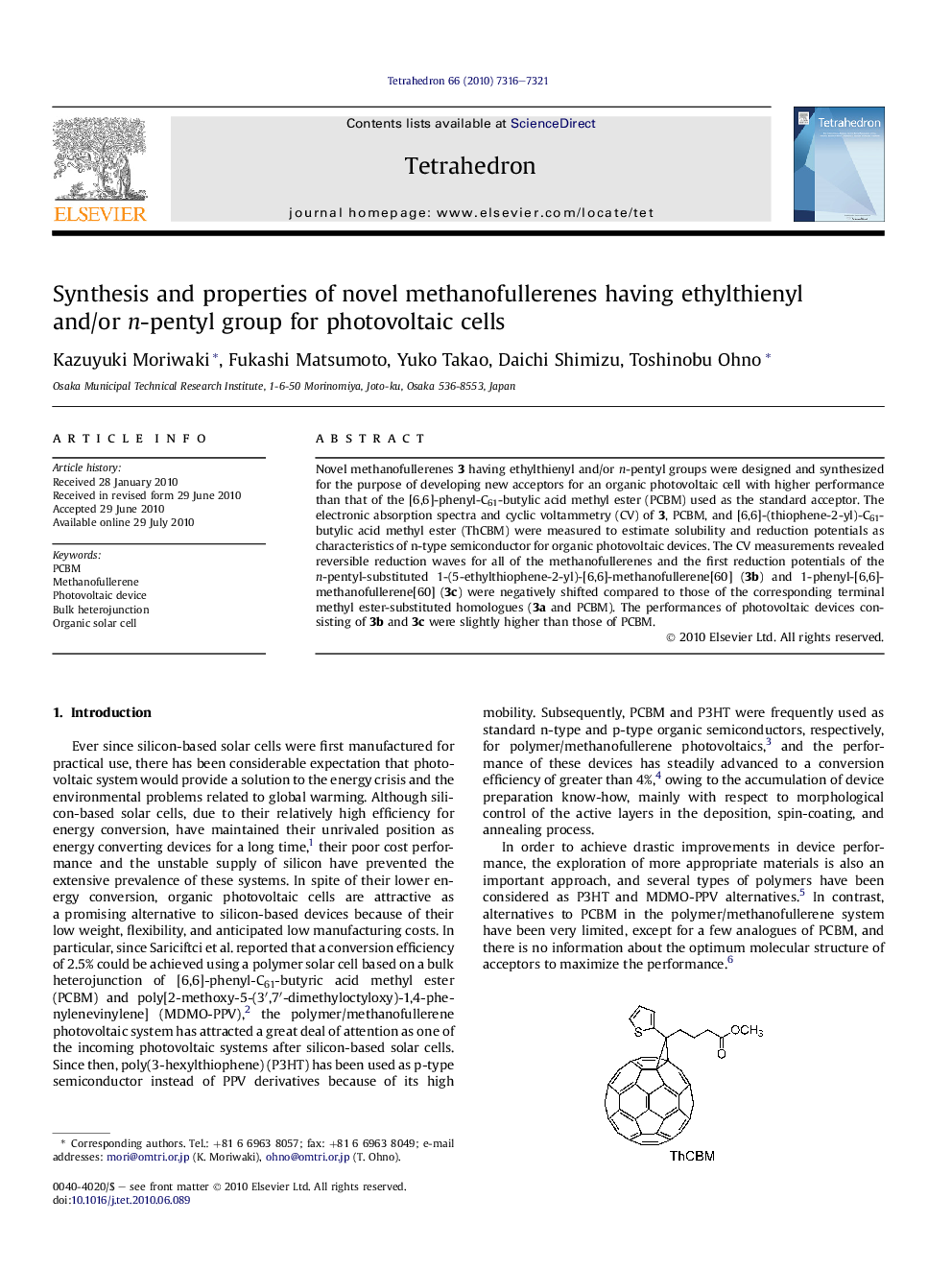| Article ID | Journal | Published Year | Pages | File Type |
|---|---|---|---|---|
| 5222906 | Tetrahedron | 2010 | 6 Pages |
Novel methanofullerenes 3 having ethylthienyl and/or n-pentyl groups were designed and synthesized for the purpose of developing new acceptors for an organic photovoltaic cell with higher performance than that of the [6,6]-phenyl-C61-butylic acid methyl ester (PCBM) used as the standard acceptor. The electronic absorption spectra and cyclic voltammetry (CV) of 3, PCBM, and [6,6]-(thiophene-2-yl)-C61-butylic acid methyl ester (ThCBM) were measured to estimate solubility and reduction potentials as characteristics of n-type semiconductor for organic photovoltaic devices. The CV measurements revealed reversible reduction waves for all of the methanofullerenes and the first reduction potentials of the n-pentyl-substituted 1-(5-ethylthiophene-2-yl)-[6,6]-methanofullerene[60] (3b) and 1-phenyl-[6,6]-methanofullerene[60] (3c) were negatively shifted compared to those of the corresponding terminal methyl ester-substituted homologues (3a and PCBM). The performances of photovoltaic devices consisting of 3b and 3c were slightly higher than those of PCBM.
Graphical abstractDownload full-size image
